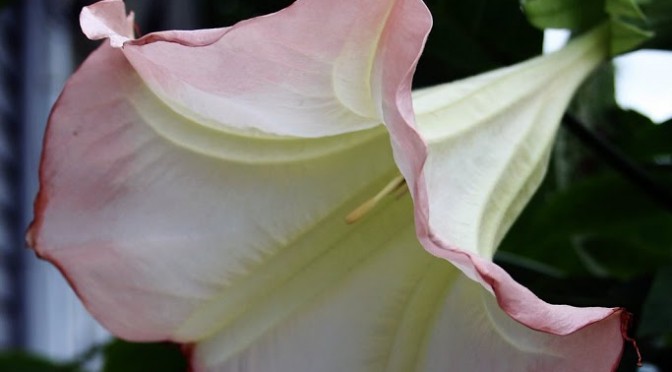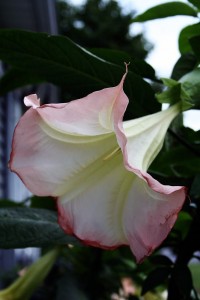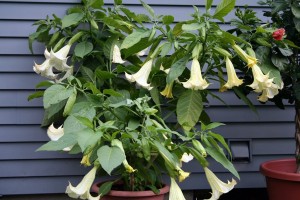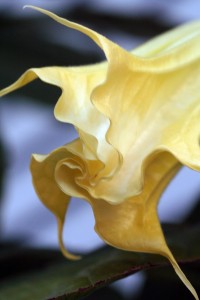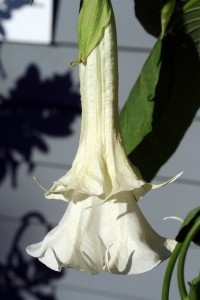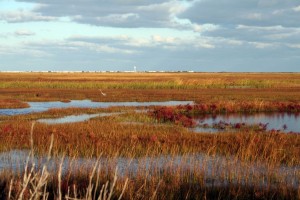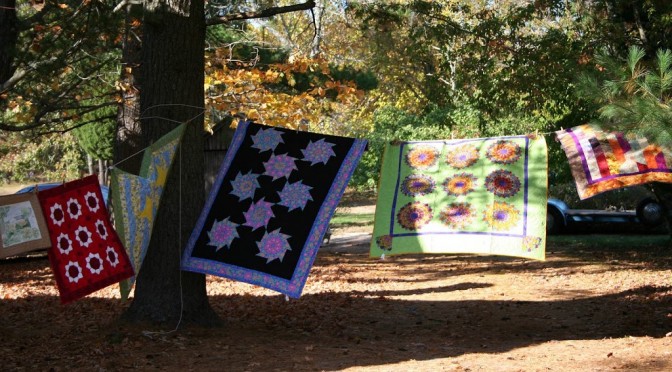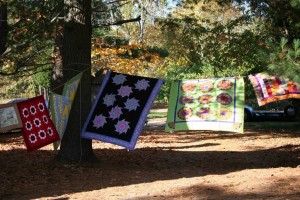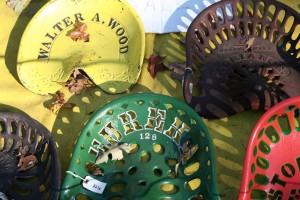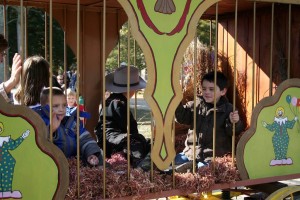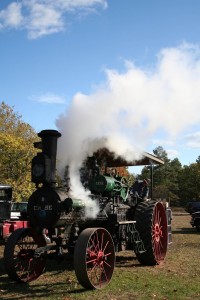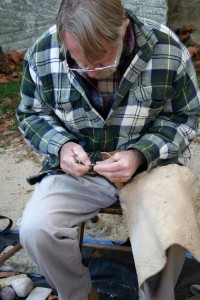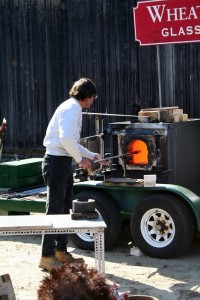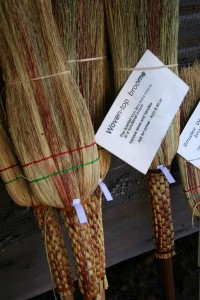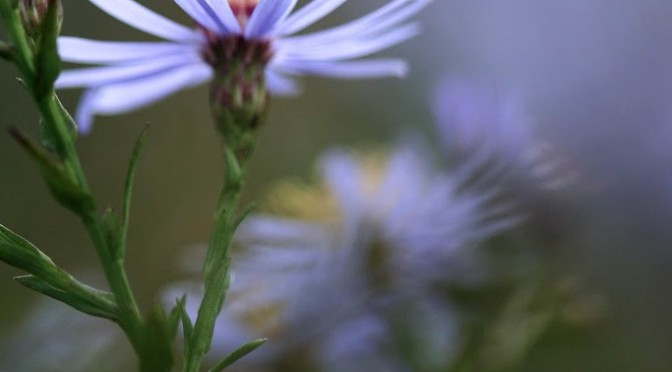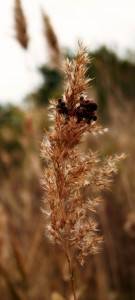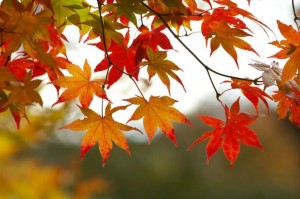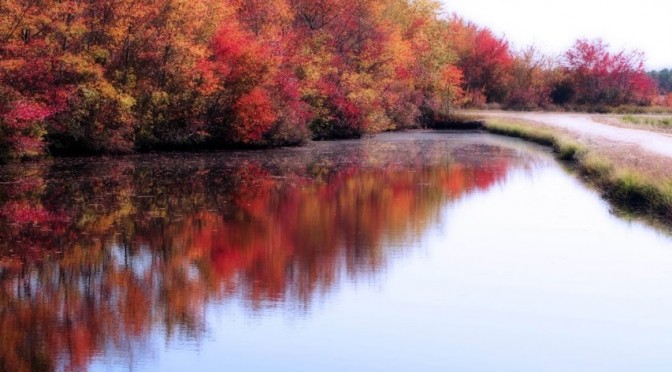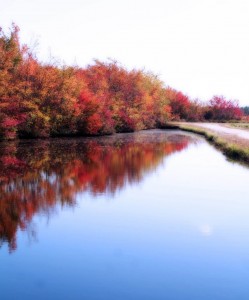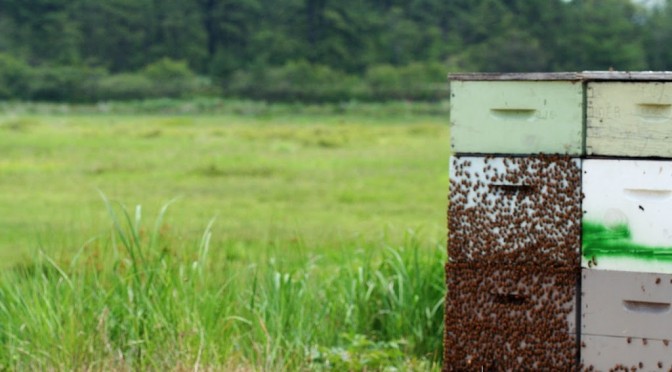Cranberries grow in the Pine Barrens regardless of whether they’re cultivated or not; those that grow along the borders of swamps are not as large as their cultivated cousins, but I’m sure they’re just as tasty. Cranberry farming is said to be among the most respectful of the environment; pesticide and fertilizer use is minimal and the harvest during the month of October is quite the agricultural spectacle, in my opinion.
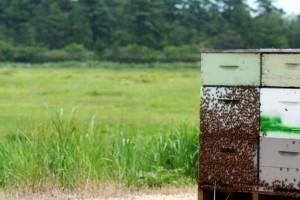 During the summer months, a cranberry bog is a carpet of tangled vines. When the vines are in flower in early summer, pollination is assured by placing any number of perilous beehives among the bogs. There’s often nice numbers of dragonflies and butterflies, too, that feed on the wildflowers that grow along the dikes.
During the summer months, a cranberry bog is a carpet of tangled vines. When the vines are in flower in early summer, pollination is assured by placing any number of perilous beehives among the bogs. There’s often nice numbers of dragonflies and butterflies, too, that feed on the wildflowers that grow along the dikes.
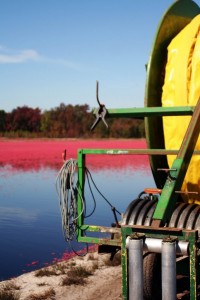 At some point in late summer, the bogs are flooded via the system of dams that interlaces the bogs. The water protects the tiny fruit and makes harvesting much less labor-intensive.
At some point in late summer, the bogs are flooded via the system of dams that interlaces the bogs. The water protects the tiny fruit and makes harvesting much less labor-intensive.
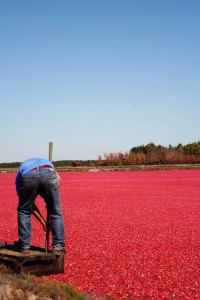 This man here is making some adjustment to the water level in the bog. The color of the berries just astounds me! Typical of fall, the vegetation along the dikes was covered in spider webs and there were millions of spiders everywhere… ballooning in the air, crawling over the farm equipment, climbing in my hair. Eeck! There’s not ever much in the way of birds here, save the Turkey Vultures and at least 30 Killdeer stalking the dikes.
This man here is making some adjustment to the water level in the bog. The color of the berries just astounds me! Typical of fall, the vegetation along the dikes was covered in spider webs and there were millions of spiders everywhere… ballooning in the air, crawling over the farm equipment, climbing in my hair. Eeck! There’s not ever much in the way of birds here, save the Turkey Vultures and at least 30 Killdeer stalking the dikes.
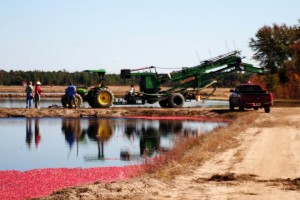 This is one of the scary-looking machines used to harvest the cranberries; I think this may be some type of conveyor-belt thingy, actually. Specialized machines… things that look like tractors for water are driven through the bogs to beat the berries off the vines so that they float to the top. The berries are corralled to one corner of the bog and then collected and transported to the Ocean Spray processing plant that’s in a nearby town.
This is one of the scary-looking machines used to harvest the cranberries; I think this may be some type of conveyor-belt thingy, actually. Specialized machines… things that look like tractors for water are driven through the bogs to beat the berries off the vines so that they float to the top. The berries are corralled to one corner of the bog and then collected and transported to the Ocean Spray processing plant that’s in a nearby town.
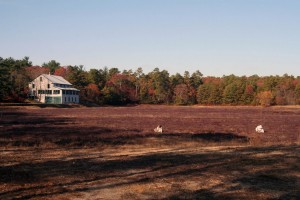 After harvesting, the bogs are drained so the vines can be pruned (or picked-over by hand for any that were missed by the beaters!) The bogs are flooded again in late December or early January to protect the vines from freezing and further irrigated, if necessary, to keep the water from freezing over. In spring the bogs are drained again and the honeybees brought back into service and the cycle starts anew.
After harvesting, the bogs are drained so the vines can be pruned (or picked-over by hand for any that were missed by the beaters!) The bogs are flooded again in late December or early January to protect the vines from freezing and further irrigated, if necessary, to keep the water from freezing over. In spring the bogs are drained again and the honeybees brought back into service and the cycle starts anew.
If you’re interested in witnessing this spectacle, Piney Power has a schedule of harvest dates and directions to farms that are visitor-friendly. Two of my favorite places are Double Trouble State Park in Bayville and any of the farms along Rte. 530 near Whitesbog Village. There’s some great pics of the harvest at that link also. Enjoy!
 You know everyone’ll get along pretty well when you can’t even stop laughing long enough to pose for a pic. Susan had Lynne and I in hysterics…
You know everyone’ll get along pretty well when you can’t even stop laughing long enough to pose for a pic. Susan had Lynne and I in hysterics… and just wouldn’t stop her silliness. Maybe at some point tomorrow there’ll be something like serious birding. In the meantime… all that laughing you hear… that’ll be the flock.
and just wouldn’t stop her silliness. Maybe at some point tomorrow there’ll be something like serious birding. In the meantime… all that laughing you hear… that’ll be the flock.
